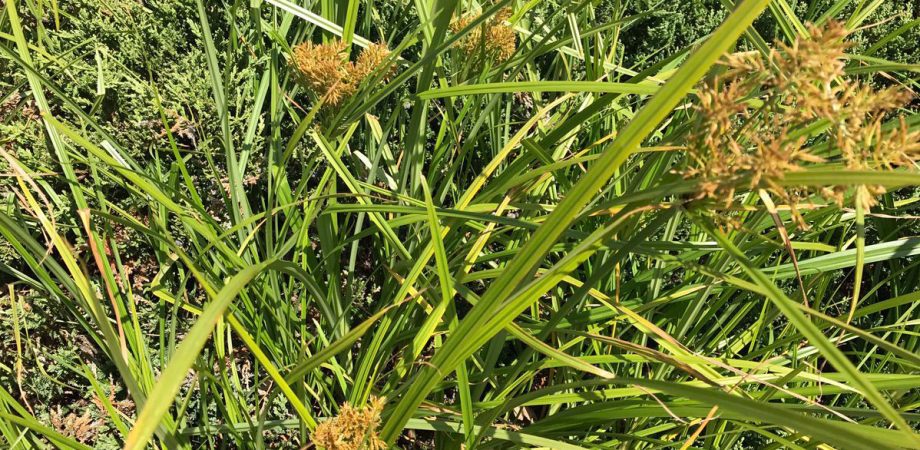Yellow Nutsedge Q&A with Nufarm

We asked Aaron Hathaway, Nufarm Technical Services Manager, a few questions about yellow nutsedge. Learn when the weed begins to appear, how to identify it, what conditions create a perfect environment for it, challenges we face when trying to manage it, and how to effectively control it.
When does yellow sedge begin to show up?
As early as May but we don’t really see yellow nutsedge in higher cut turf until June.
What are the indicators a weed is yellow nutsedge?
Yellow nutsedge is easily identified by its triangular-shaped stem.
Yellow nutsedge has triangular stems, three-ranked leaves, a very waxy cuticle, and is conspicuously yellow in color especially relative to well-fertilized turf. It often grows faster than the turf around it and sticks out like a sore thumb.
What turf conditions create a perfect environment for the development of yellow nutsedge?
Yellow nutsedge usually thrives in wet soil areas but has been seen in dry areas to a lesser extent. It is often seen in low areas of lawns or areas where there is a leaky irrigation head, etc. Yellow nutsedge can dominate mulched beds as well, especially when the soils stay moist, which can be common depending on mulch depth.
What challenges do we face when controlling yellow nutsedge?
Yellow nutsedge has a very prolific underground vegetative storage system as tubers (nutlets) and rhizomes. If you don’t get herbicide to those tubers and rhizomes, the plant can survive and expand producing even more vegetative parts that will rear their heads the following season. Yellow nutsedge will produce seeds if left un-mowed, but as few as 2% of these seeds are viable – its main mode of reproduction is through the tubers of which plants can produce hundreds in one growing season. The tubers are hearty and difficult to destroy chemically, but a translocating herbicide and a program approach (making sure to revisit the site in the following years as tubers can remain viable for 3 years or more) when yellow nutsedge is particularly problematic is important.
Another challenge for nutsedge control is that LCOs often react to it instead of planning because it shows up later in the season and isn’t a problem in every lawn. Focus on creating a plan for yellow nutsedge control especially in irrigated lawns or lawns that stay wet for longer periods of time.
What is the best way to control yellow nutsedge?
A healthy stand of turf that drains well and has appropriate irrigation is the first step in helping to reduce the potential for yellow nutsedge development and all other weeds. Understanding the lifecycle of yellow nutsedge and deploying herbicide controls that take advantage of the plant’s lifecycle is the key to maximizing control. Generally, yellow nutsedge begins pushing up new foliage in the late spring and continues this vertical growth until mid-summer. During this period, yellow nutsedge is using all its reserved energy from the underground tubers to produce this vertical leaf tissue. After late June (around the Summer Solstice) through the rest of the summer yellow nutsedge focuses its energy downward, pushing reserves back into tubers and rhizomes, creating more underground vegetative parts to overwinter and be available to grow more aggressively the following year.
Celero is an excellent systemic herbicide that will travel with the photosynthates that yellow nutsedge is moving downward when applied around and after the summer solstice and targets the tubers and rhizomes to kill the entire plant. Further, yellow nutsedge is neither a broadleaf plant nor a grass – it is sedge. Celero is a sedge-specific herbicide that is reliably safe on warm- and cool-season grasses.
Aaron Hathaway
Technical Services Manager
Nufarm Americas Inc.
M: 586.292.6938
E: [email protected]







